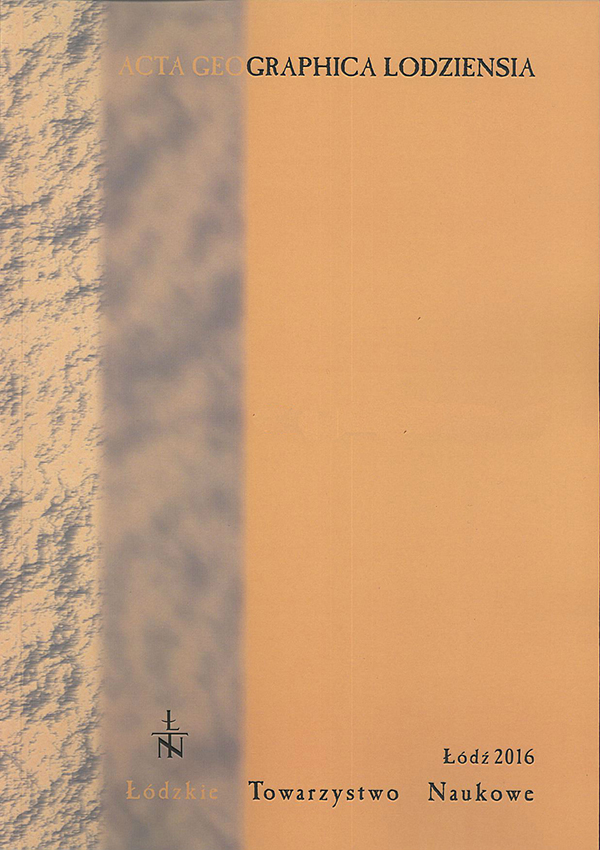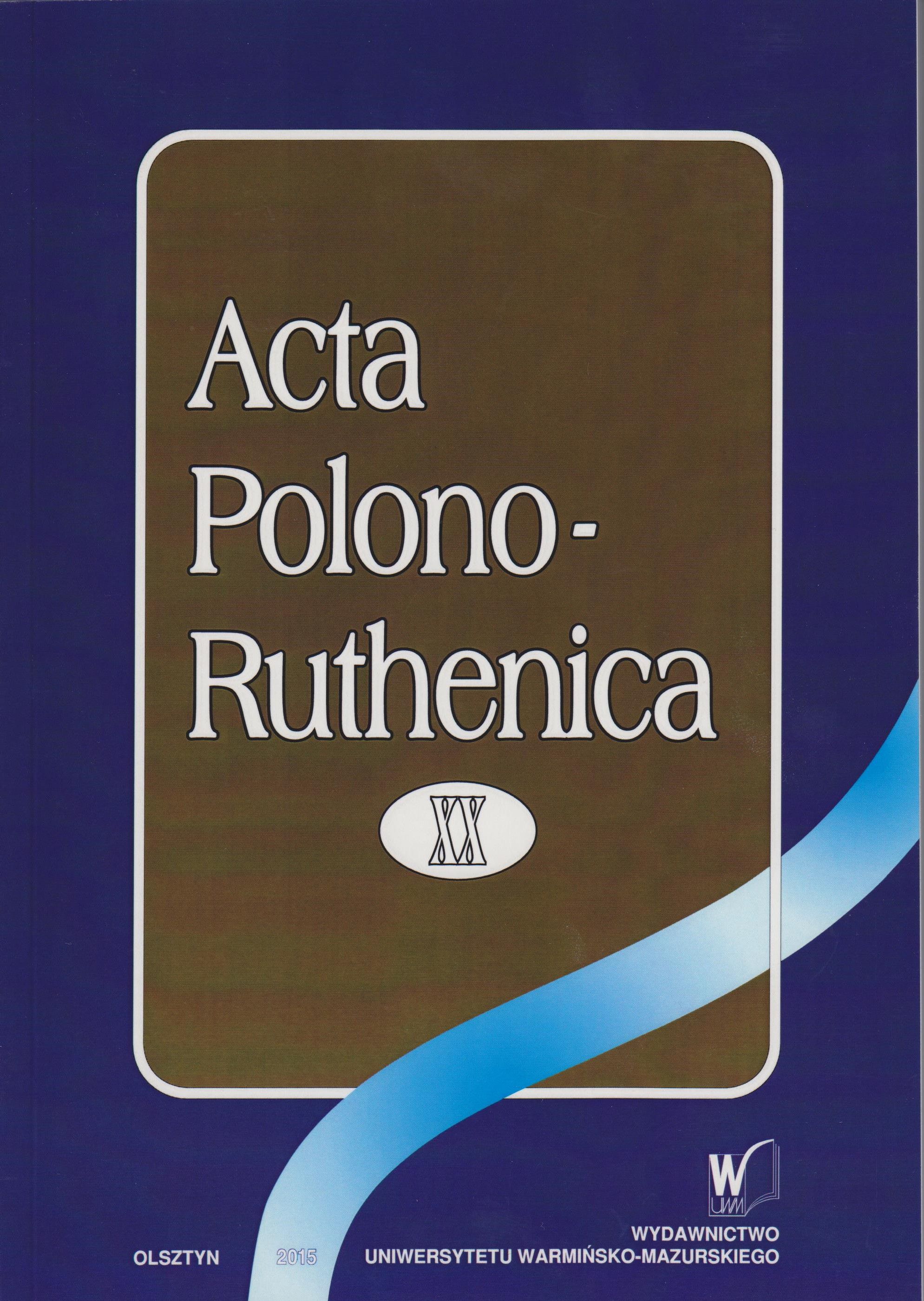
Wyniki rocznego monitoringu stężenia radonu w powietrzu budynku mieszkalnego w Łodzi na tle warunków meteorologicznych
1-hour average of indoor air Rn-222 concentrations were monitored for 356 days (from 20 May2014 to 10 May 2015) in a single-family detached house. The house was built in 2004 and has twofloors without a basement – ground floor and attic. The examined building is located in the northwesternpart of Łódź, in a residential area with a suburban type of land use (a high contribution ofgreen areas, address: Kąkolowa Street 66, φ = 5149’11”N, λ = 1920’57”E). The subsoil beneath thehouse dates back to the Quaternary and consists of a thin layer of sand (10–40 cm) at a depth of ca 0.4–0.7m and sandy clays at a depth of ca. 0.7 m. The level of groundwater occurs shallowly in the investigatedarea – in the sand at a depth of 0.4–0.7 m and in the clay at a depth of 1.2 m.The measurements of indoor air Rn-222 concentration were performed on the ground floor (floor area100 m2, 3 m height) using an automatic ionization chamber AlphaGUARD® PQ2000 PRO (active methodof measurement, diffusion mode). The house was occupied by 4 people in the measurement period with theexception of 17 days (from 18 July 2014 to 3 August 2014). Long-term hourly time series of indoor air Rn-222 concentration used in the study are unique in Poland.The data-base was also correlated with the values of indoor meteorological parameters such as airtemperature and atmospheric pressure recorded by AlphaGUARD® PQ2000 PRO. Outdoor meteorologicalparameters (air temperature and rainfall) were obtained from a weather station located 3.3 km to the East ofthe house. The circulation types were distinguished objectively by a classification based on the circulationindices developed by Jenkinson and Collison (Piotrowski 2009).The annual average daily value of indoor air Rn-222 concentration was 47 Bq·m–3 and it was similar tothe general mean value for Poland – 49 Bq·m–3 and for Central Poland specifically – 43 Bq·m–3 (Biernackaet al. 2006). In the occupied house, the daily averages of air Rn-222 levels ranged from 8 Bq·m–3 (8 August2014) to 85 Bq·m–3 (3 October 2014). During the period when the house was unoccupied (closed), the averageswere higher and varied from 52 Bq·m–3 to 125 Bq·m–3, (July 2014). The fluctuations of hourly indoorair Rn-222 concentrations were in the range of 2–117 Bq·m–3 (occupied house) and 20–155 Bq·m–3(closed house).The average indoor Rn-222 levels in the summer were approximately twice as low as in the other seasonsand amounted to 22 Bq·m–3. The maximum of the seasonal average of indoor Rn-222 levels occurredin autumn – 56 Bq·m–3. Autumn is also distinguished by the widest range of daily fluctuations in indoor airRn-222 concentration. The described annual variability of indoor Rn-222 levels with a maximum in thecold season and a minimum in summer refers to the results presented in the literature concerning houses inNorthern Europe (e.g. Hubbard et al. 1996).A number of authors emphasized that air temperature differences between the interior and exterior ofbuildings is a key environmental factor determining seasonal variability of indoor Rn-222 levels. The occupants’activity and construction of buildings should be analysis of the factors determining Rn-222 concentrationin houses (e.g. Hubbard et al. 1996; Karpińska et al. 2004a, b, 2005; Rowe et al. 2002). Thisstudy generally confirms that an increase in indoor air Rn-222 concentration during a decrease in the outdoorair temperature (especially in autumn) excluding winter months (e.g. December 2014) were observed.A significant decrease of the external air temperature and intensification of the house heating caused extensiveair movement and ventilation with influx of outdoor air with low radon concentration (outdoorair Rn-222 in Łodź: ca. 5 Bq·m–3). In the examined house the occupants used the fireplace as the heatingsystem. This influenced the reduction of indoor air Rn-222 levels on very cold winter days. This effect wasdescribed for certain Swedish houses by Hubbard et al. (1996).The present analysis indicated no clear relation between the variability of indoor air Rn-222 levels andair pressure. Investigation of the type air circulation (cyclonic and anticyclonic) and its effects on the dailymaximum of indoor air Rn-222 in the house indicated a lack of significant difference in the distribution ofthe Rn-222 levels in the two analyzed groups of days.The annual variability of rainfall corresponded to the annual fluctuation of indoor Rn-222 levels in thehouse. A decrease in the indoor Rn-222 levels was observed after rainy periods. The connection to the rainfallcan be explained by the shallow groundwater levels (ca. 0.4–0.7 m below ground level) under the examinedhouse. The groundwater is a factor restrictive for the exhalation of Rn-222 from the ground due tothe so-called “capping effect”. The influence of rainfall on indoor Rn-222 levels in buildings in SouthernItaly was documented by De Francesco et al. (2010). The monitoring of temporal variations of radon gas indoors is fundamental for proper estimation of theannual dose of ionizing radiation. Further investigations based on the monitoring of continuous long-termRn-222 air concentration in the house with reference to meteorological factors are needed to improve thepredictive model of indoor air Rn-222 concentration.
More...




